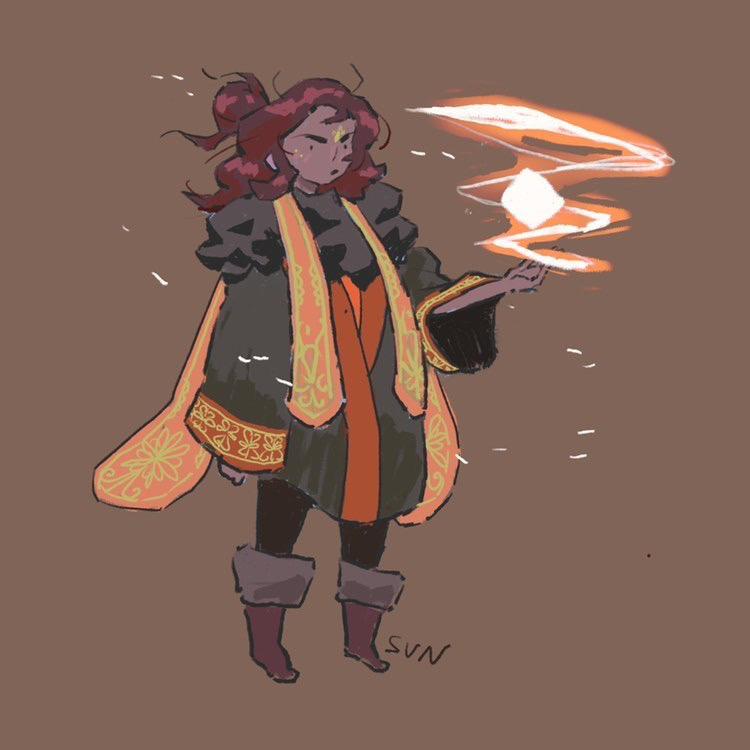Binding of Lovers
A Danatelian Wedding Ceremony
From this day on, you will be for one another what the waves are to the beaches they embrace ceaselessly, what the stars are to the night sky they love. By the powers vested in me by the gods, I pronounce you bound.
The Binding of Lovers is a special wedding ritual found in the Danatelian Lands. For a couple to be able to partake in the Binding, they must be habayan for one another, which appears as matching loss of pigments on the skin of the lovers. The ceremony can only be conducted by priests of Samara, the goddess of love.
Celebrations
The lovers must first present themselves to a priest of Samara, who will execute a series of rituals and prayers to attest that they are indeed Habayan. Once that is proven to be the case, preparations are started for the ceremony. In most villages and sometimes even smaller towns, the celebrations will occupy the entire population. In cities, they might instead limit themselves to a neighbourhood.The celebrations themselves last 9 days, each day in dedication to one of the seven gods of the Saohri pantheon while the last three celebrate exclusively the goddess Samara, patron of love. Feasts are thrown in honour of the gods, with many traditional dances including the famed "Dance of Lovers", a ball that takes place on the night of the 7th day right before the shooting of fireworks.
Ritual
During the first 8 days, the to be wedded couple goes through a series of purifying rituals. They must learn a series of rites and vows that they will have to recite during the Binding. They are guided through this process by a priest of Samara, who is generally high ranking amongst their local temple.The actual Binding of Lovers takes place on the dawn of the 9th day. The couple, priest and close family members gather together in a temple of Samara. The guests are sat in a demi circle on the floor, with the priest and couple sat in the center.
Love Gems
The Love Gems are precious stones meant to be gifted to newly wed couples on their wedding days. The tradition dates back all the way to the birth of the Danatelian civilisation. They are meant to bring good fortune to the couple, and are also a symbol of the love they have for one another.Love gems are usually kept within families: poorer families might pass down their own love gems to their children, while richer people tend to accumulate them as generations pass and turn them in fusahabi by embroidering the stones onto them.
There are no requirements regarding the size, colour or quality of the love gem. In some small villages, it isn't uncommon for the entire population to come together to gift a stone to a couple.
I know it isn't much, but me and the family managed to come together to get these for you. May they protect you in your future endeavours, and guide you through whatever comes.
Origins
The tradition is based on a Saohri myth, in which the god Kirïal made two legendary birds which he gifted to his husband, the god Aher. The birds, named Zafir and Burias, each had a gem embed in their foreheads that had been enchanted by the god to bring good luck to their future lives.Habayan
The Danatelians have a few different concepts of love, as most cultures do. Amongst them are platonic love, the love a parent has for their children, or romantic love to name a few. But most holy amongst them, and unique to the Danatelians, is Habayan, best understood as "pure love". It is the gift of the goddess Samara to mortals, and only a few people are ever so lucky as to ever carry habayan in their hearts.Technical Details
Age: the couple must be of legal age, and the union requires the approval of a priest.Materials: During the ceremony, the lovers are united together with a red thread. Later, it is used to make necklaces the betrothed wear for the rest of their lives.
History: The Binding of Lovers is a ceremony that dates to the earliest days of the cult of Samara, around 12th century before A.A.









This is beautiful. I love the quote at the beginning. I feel as though I would cry if those were my marriage vows. Is there another marriage ritual for those who are not habayan? From what you said that's kind of a rare form of love.
Explore Etrea
Thank you :'0, that really means a lot. There are actually other ceremonies, I made a quick edit to specify that- as for how rare habayan is, I'm thinking of writing a short article about it to explain it a little better. Thank you for your comment!